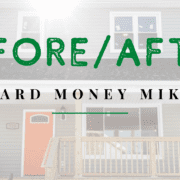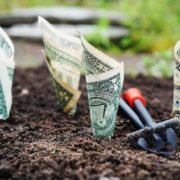What is the Difference Between Wholesale and Wholetail?
What is the Difference Between Wholesale and Wholetail?
The difference between wholesale and wholetail is actually pretty easy to understand. It all comes down to your buyer, and what needs to be done to sell the property to that buyer.
What is Wholesaling?
With wholesaling, you need to find a heavily discounted property and sell it to someone who is also looking for a discounted property. So, usually a fix and flipper.
Unlike wholetailing, you don’t need to do ANYTHING with a wholesale property. Because you won’t own it for more than a couple of days or weeks. All you need to do is assign the contract to your buyer; or complete a double closing (buy the property, turn around, and sell it the same day).
You’re in and out FAST.
But you might not make as much as you’d make with a wholetail deal. Why? Well, let’s take a closer look at wholetailing.
What is Wholetailing?
Unlike wholesaling, you have more types of buyers with wholetailing.
- Fix and flipper. Just like with wholesaling, fix and flippers aren’t going to pay very much because they have to go in and completely renovate the property. They’re looking to make money, so they’re not going to pay more than what you would’ve paid, minus the assignment fee.
- Landlord. This buyer will pay a little more than a fix and flipper because they still have to go in and fix the property up so it’s rent-ready. But their renovations won’t be as extreme as a fix and flippers, so the purchase price can be higher.
- Retail consumer. These buyers are on the MLS, and they’re looking for a good deal. But they’re not looking to make a profit like a fix and flipper or landlord, so you can charge a higher purchase price. Therefore, they’re the most profitable.
Now, with retail consumers, the purchase price probably won’t be as high as comparable homes in the same neighborhood because the property will still need work. But it’s in lendable condition, so you can still make a good profit. For example, if the going rate in the neighborhood is $300,000, then you can probably charge between $250,000 to $260,000.
Other Differences
Wholetailing also differs from wholesaling because you might own the property for 3 months or longer. Why? Because if you sell to a retail buyer, that buyer might need to get an FHA loan, and FHA loans (aka, bank loans) require certain “seasoning” (meaning you have to own the property for a certain length of time before you sell it). And when you own a property for more than a few days, you’ll need to think about taking good care of it.
No, that doesn’t mean you have to fix it, but you will need to keep it in good, livable, lendable condition. So getting a vacant home insurance policy to protect it against things like fires would be a good idea. Another good idea is putting the utilities in your name to keep the heat and plumbing on, especially during the winter months when pipes freeze and burst.
Yikes!
So, there you have it. Like we said, the difference between wholesale and wholetail is pretty easy. Just think about the type of buyer and what that buyer is planning to do with the property.
Ready to talk about your cash flow options? Great, our team is here to help.
Happy investing!












Leave a Reply
Want to join the discussion?Feel free to contribute!